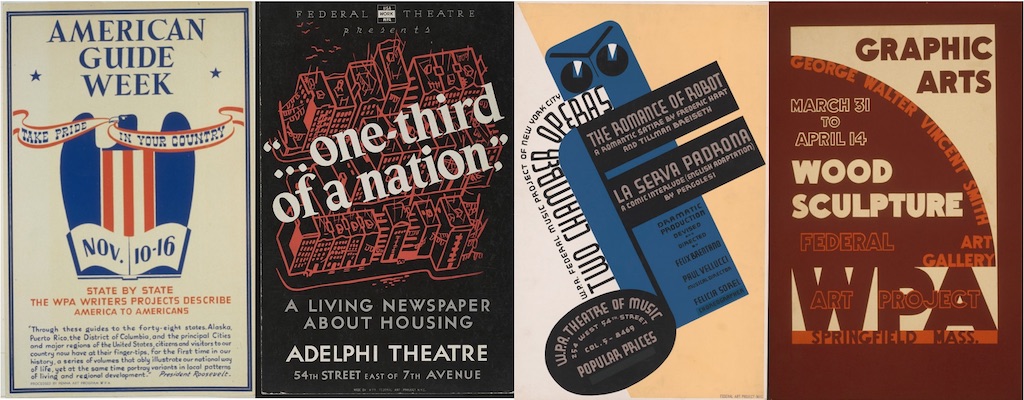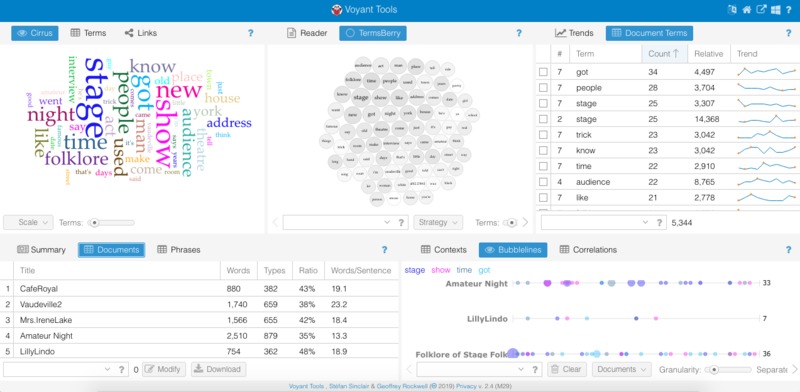Text Analysis
I used Voyant in tandem with narratives of people of color and white people on stage in the 1930s to understand what people thought was important to memorialize from their theatrical experience. I felt that using documents from the actor’s perspective showed what they chose to say and, more importantly, how often other people identified with those struggles. The words are all very experience-based surrounding performance. They discuss running late, performance mishaps, and the general process of producing high-level shows. People who spend a lot of time in the theater are prone to talking about it and not their experience in it so, I wasn’t surprised to find words like “show” “stage” “people” “new” “time” and “interview among the common frequencies. But, deeper in Voyant, we can find much more surrounding the historical question. For example, the word “white” was used fifteen times in the documents. It’s clear that people of color were still largely marginalized by white performers and audience members and that white people still dominated playing spaces. Offensive signs of black dialect like “wuz” was used ten times sometimes from a black narrative and sometimes from a white one.

